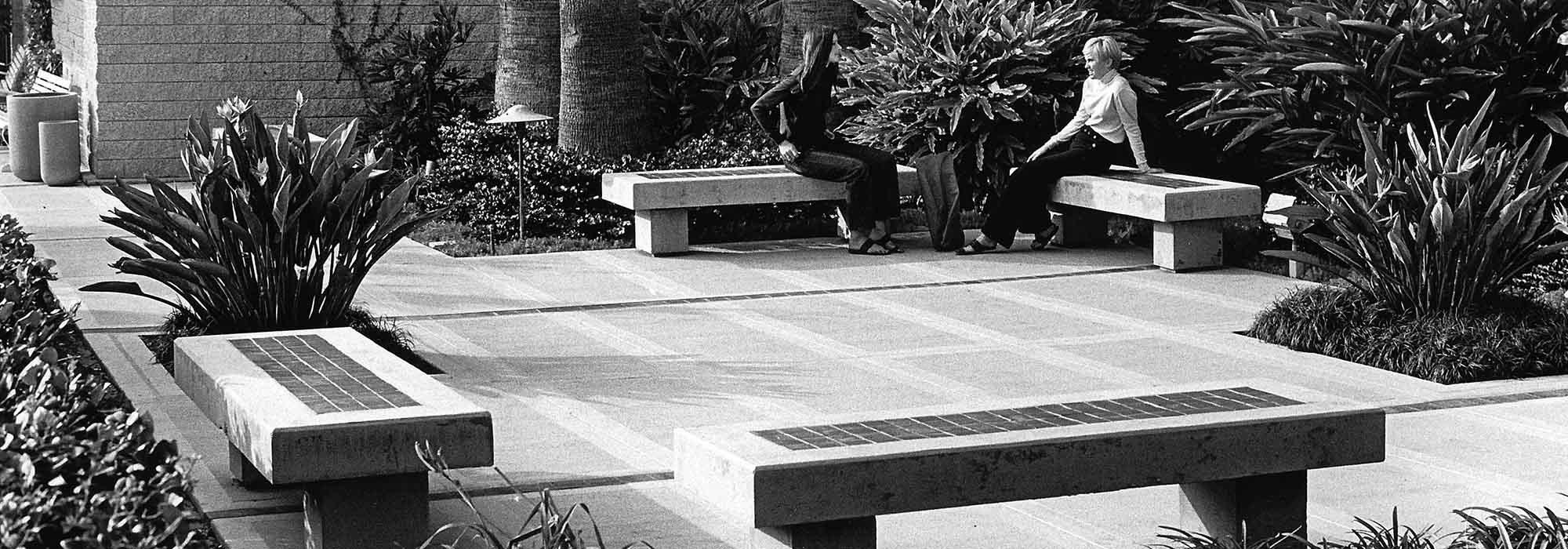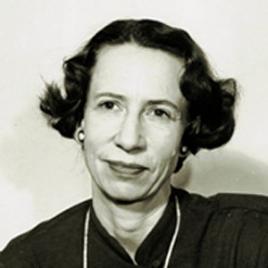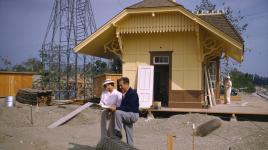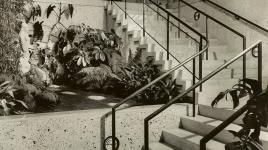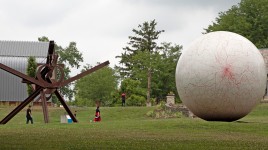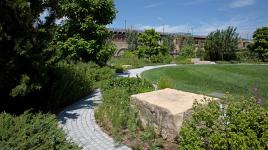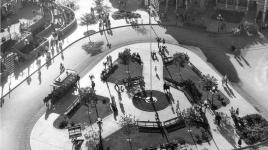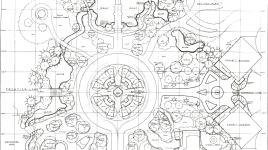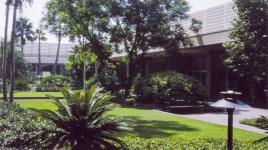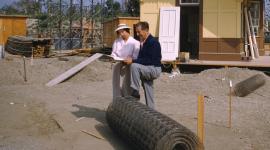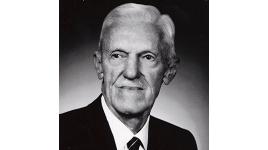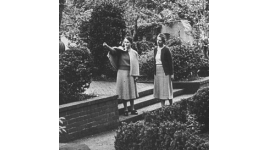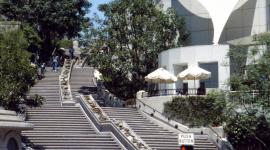Pioneer Information
Born in Los Angeles, California, Shellhorn received career advice at a young age from her neighbor, landscape architect Florence Yoch. She attended the School of Landscape Architecture at Oregon State College before expanding her design repertoire at Cornell University’s College of Architecture.
Shellhorn returned to Southern California in the midst of the Great Depression and started her own design practice. During World War II she worked on the Shoreline Development Study, which established restrictions on oil drilling in Santa Monica Bay and became a precedent for the goals of the California Coastal Act. From 1945 to 1978 she designed landscapes and site plans for Bullock’s department stores, creating Modernist designs in a park-like setting that evoked a sun-soaked, leisurely lifestyle. In 1956, Shellhorn was hired by Disney, and is responsible for Disneyland’s comprehensive pedestrian circulation system, Entrance, Main Street and Plaza Hub, creating the small-town America feeling envisioned by Walt Disney.
During her 57-year career, she completed hundreds of private gardens, with clients including Spencer Tracy, Gene Autry and Barbara Stanwyck, and also designed numerous commercial projects, medical clinics, schools, and universities. Shellhorn was named a Fellow of the American Society of Landscape Architects in 1971.



